Sexual liberation has taken a hit in the past couple of years with systematic attacks on women’s reproductive rights, and global platforms like Instagram, Twitter and OnlyFans policing nudity and sexually explicit content. Bored of being restricted online and moving through a world that fears sex, Tom Selmon decided to launch a no-limitations erotica magazine called Sensored in 2021 to celebrate “everything that is deemed demoness.”
Grappling with our desires can often feel like a solitary journey but Tom doesn’t think it needs to be. “Honesty breaks down stigmas, and the more people are honest about what their true feelings are, it makes more people open up and a nicer conversation is started around sex,” he says. Tom hopes the photography magazine — the second issue of which came out in October and is filled with nudity, fetish and sex acts that span gender, age and identity — can ignite important, nuanced discussions around intimacy.

When the project began, Tom felt it was really important to ask himself: “What would I be almost embarrassed to tell someone about if people are like ‘what are you into?’” If there was something he felt ashamed to say, that’s what he felt should be put onto paper for everyone to see. In the first issue, he explored gay sex that didn’t involve penetration, and the idea that some men aren neither tops nor bottoms. He looked at ‘frotting’; a male-to-male sexual activity centred around penis-to-penis contact. “That’s something a lot of people didn’t know about, or a lot of people really like and don’t really talk about,” he says.
For Sensored 2.0, Tom selected 14 photographers — not all of whom had a background in erotica — who he thought “captured the human soul really beautifully.” In part, it’s a documentary exploration: elvin men frolicking in the wilderness on the outskirts of Melbourne by Thanh Vuong; and former cruising grounds in Cape Town that Saadiq Soeker and Mas-ood Petersen re-queer for their photoshoot. Spaces which cease to exist today due to gentrification and the proliferation of hook up apps.
Historically, the cruising spots in Cape Town in particular were a melting pot of different people: an egalitarian space the country lacks today. Saadiq explains that, on paper, South Africa is fairly liberal: it was the first nation in Africa to legalise gay marriage (which it did before the US) but in reality its queer acceptance is still largely dependent on race and class.

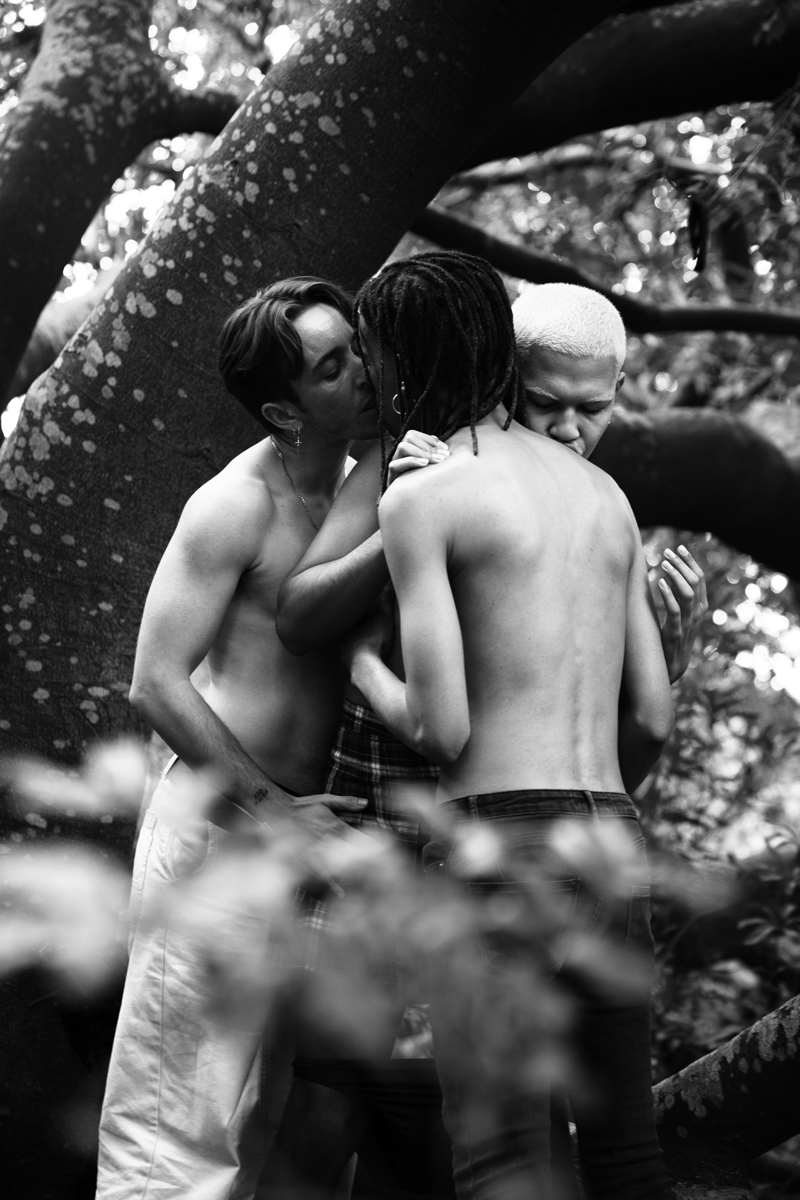
“If you were a working class person of colour, it’s a lot more difficult and complicated to navigate queer identity as opposed to a white person of a higher class,” Saadiq adds. Wealthy white people have a lot more access to the queer spaces living in the cities, while the mostly Black population living in the outskirts continue to “be subjected to homophobic violence or you’d have to hide yourself in your own family spaces.” Saadiq and Mas-ood reclaim these spaces in protest, and in their images create an alternate present.
In New Orleans, Louisiana, Meg Turner captures a fictional afternoon at a radical queer nudist colony on an airstream trailer park, inspired by the “campy set-up of porn magazine stories.” Her black and white photographs are vividly coloured in post-production and document a community outdoor bathing, washing dildos and having a spaghetti dinner that turns into an orgy.
“It’s fun,” she says. “But the marquee sign on the first photo is for me where the serious side comes in: the sign is advertising abortions and pap smears as well as wi-fi, declaring that there is both a pool and that police aren’t welcome. For me that’s what anchors this gleeful retro aesthetic to now, because today we are still fighting for bodily autonomy, healthcare and against police brutality, as well as to show nipples on the internet.”
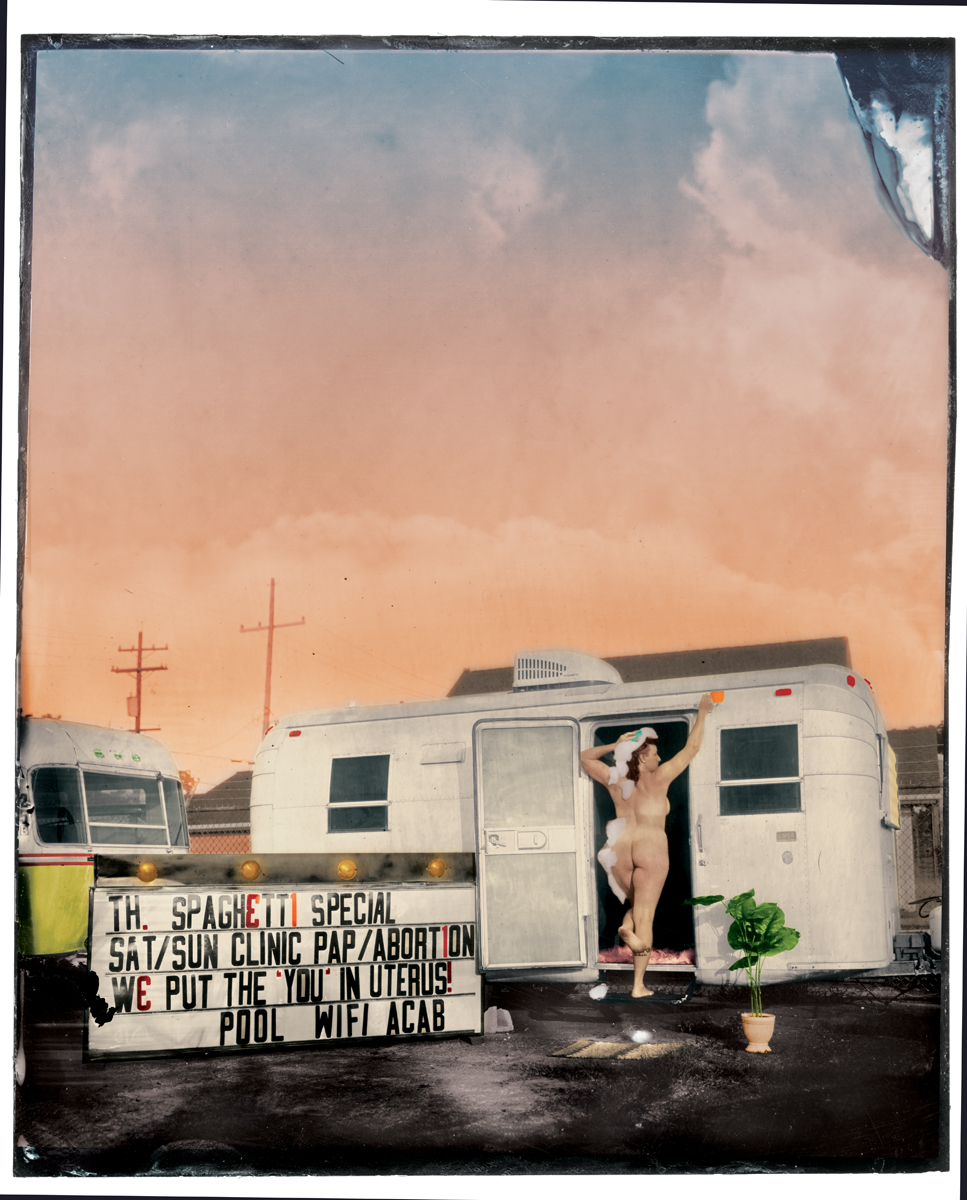
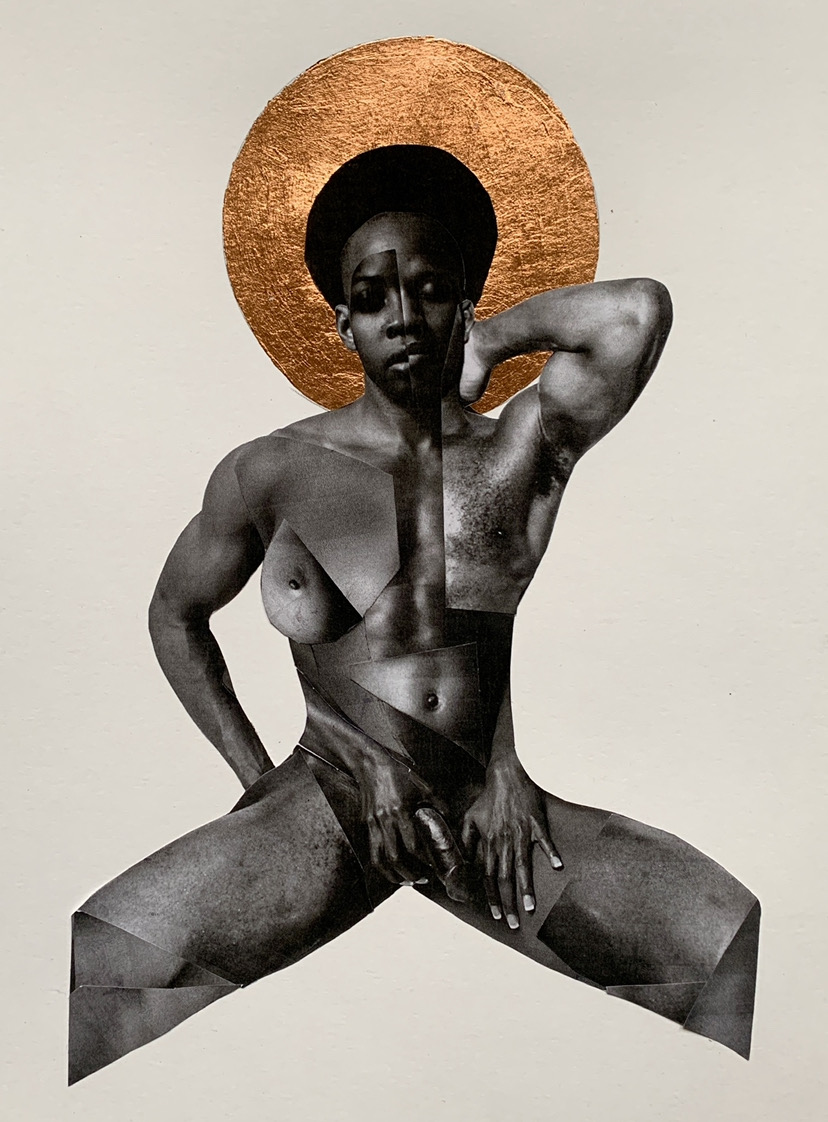
Sensored is also painterly with artists like Patrick Dougher and Scarlett Casciello looking to art history. Patrick’s Black nudes are a reimagining of Byzantium’s holy icons with their flattened gold halos, more at home on religious imagery of Christ, the Virgin Mary and martyrs. Scarlett, meanwhile, explores the Madonna-whore complex: when straight men imagine women as either saints or sluts, but never both at the same time.
“I was in a very serious relationship with someone for seven years, and I felt as though I was treated as the Madonna. I was almost this motherly figure to him that was not very sexualised,” Scarlett says. “But I also knew that he was very much watching porn of women that were the complete opposite of me.” When she became single, she noticed that she was being treated completely differently by men. On Hinge, she was quickly subjected to unsolicited dirty talk over text.
For her photo series, she started thinking about the messages she was sent by different men — asking her to get down on her knees and serve, open her legs or crawl towards them — and turned each one into a theatrical photograph. The images of performers and acrobats swinging in the air or suspended with their legs wide open, wearing outfits that stylist Hannah Hetherington had picked out from the National Theatre, were taken in a circus training space. They reference Victorian prostitution and Renaissance paintings with dark black and red backgrounds offsetting powerful women that have the complexity to be both the Madonna and the whore.
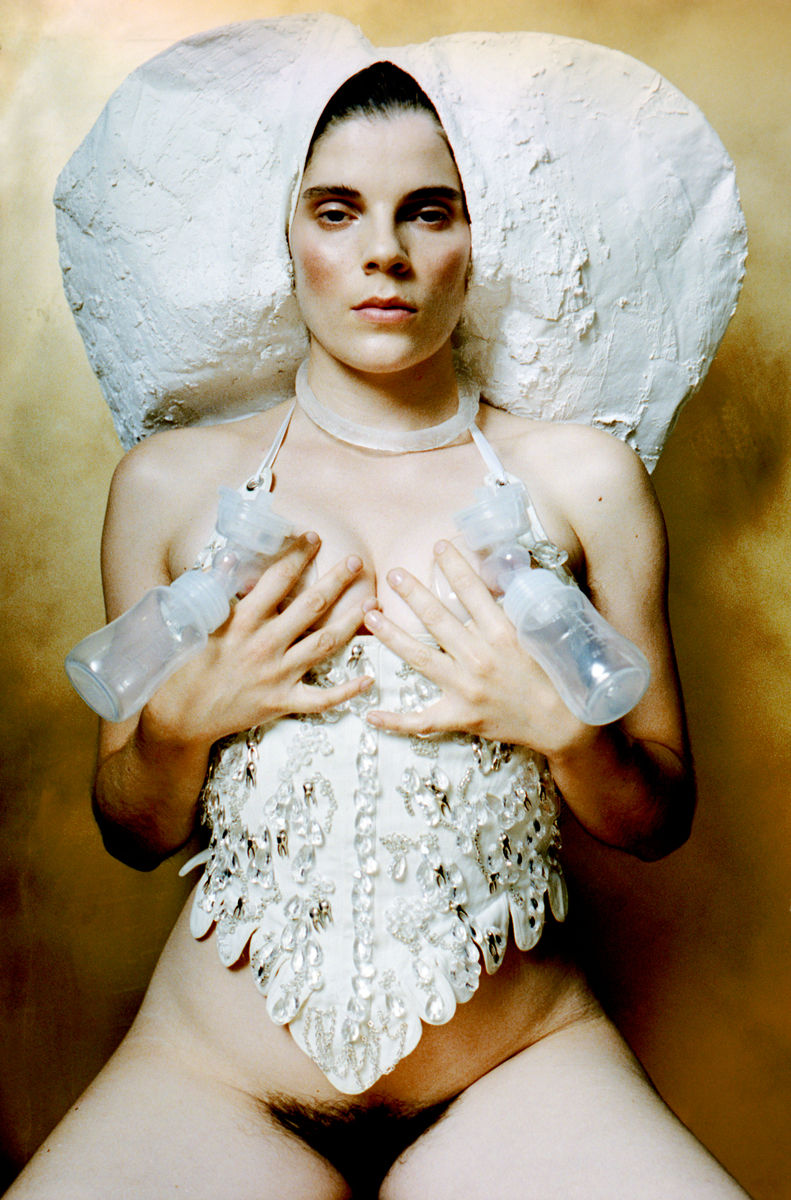
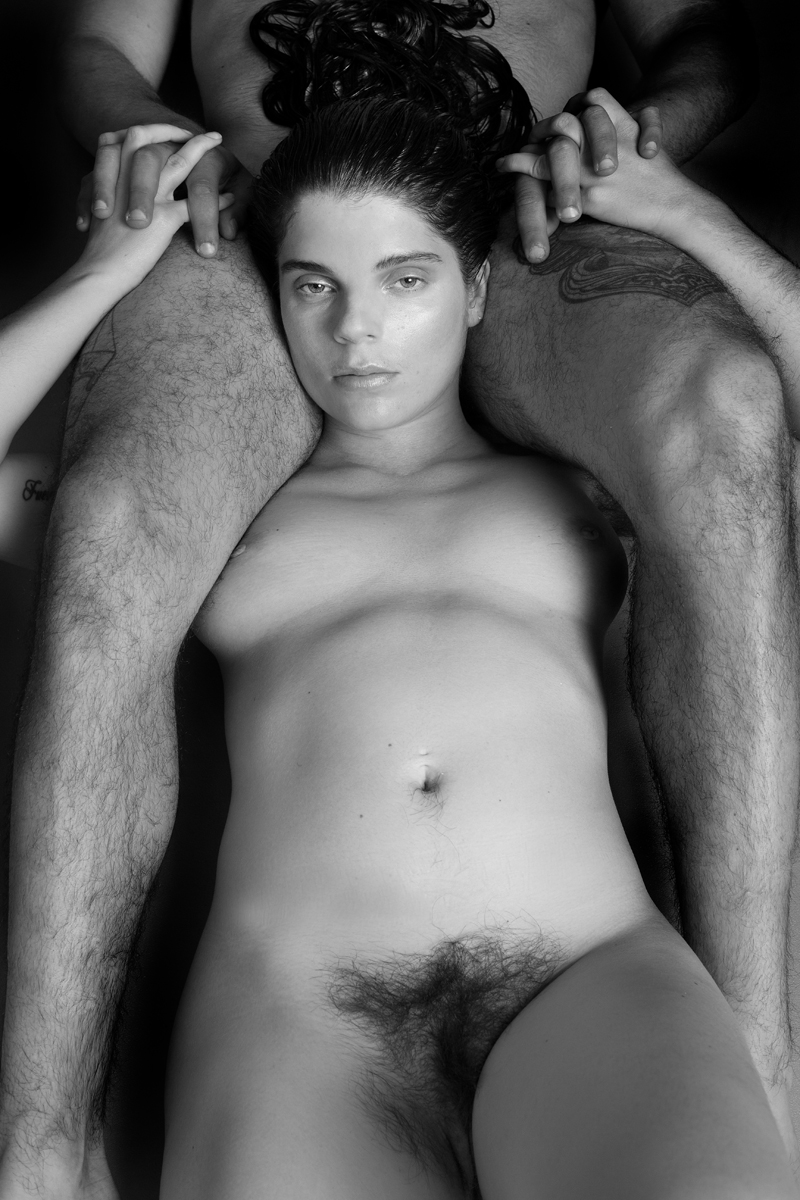
A photographer himself, Tom’s own images were inspired by a painting he saw in Queen Elizabeth I’s house in Greenwich that depicted men climbing up ladders and scaffolding, and emerging from a submarine in a way that looked like it had been painted from below. Tom creates a make believe world of nothing but pure pleasure: the oiled up men in his pictures taking on a plasticity as they engage in sex, or a mannequin-look as they dangle upside down wearing masks. “For as long as I can remember, I have always indulged in a fantasy where I’m totally immersed in an adult playground,” he writes in the magazine. “I daydream that I am left all alone with a sexual partner and we have nothing to do but play out our most primal fantasies.”
Sure, the series is graphic but none of the photography in Sensored is intended to shock, Tom says. “All of it is driven by beauty and a love of beauty, it just so happens to fall under the theme of erotica,” which he loves because it propels “models and photographers into situations that push the boundaries. I think when boundaries are pushed, you get really raw, beautiful art.”
The reaction to the work reflects that. “[People] loved how soft a sort of an approach it was to sex,” he says. “Even though some of the things were quite hard, and quite hard hitting in there with how explicit they were.”
Sensored 2.0 was designed by Polari. It can be purchased online at Sensored.uk and in magazine shops around the world.
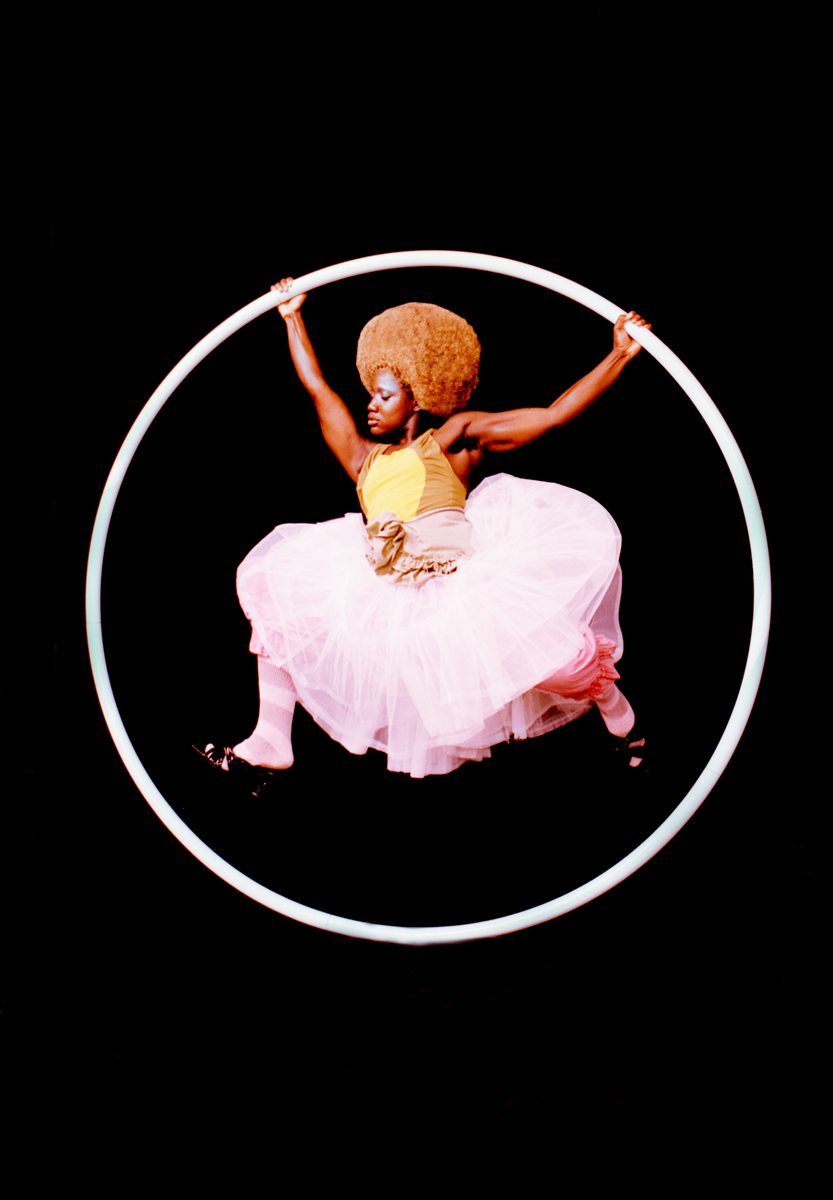
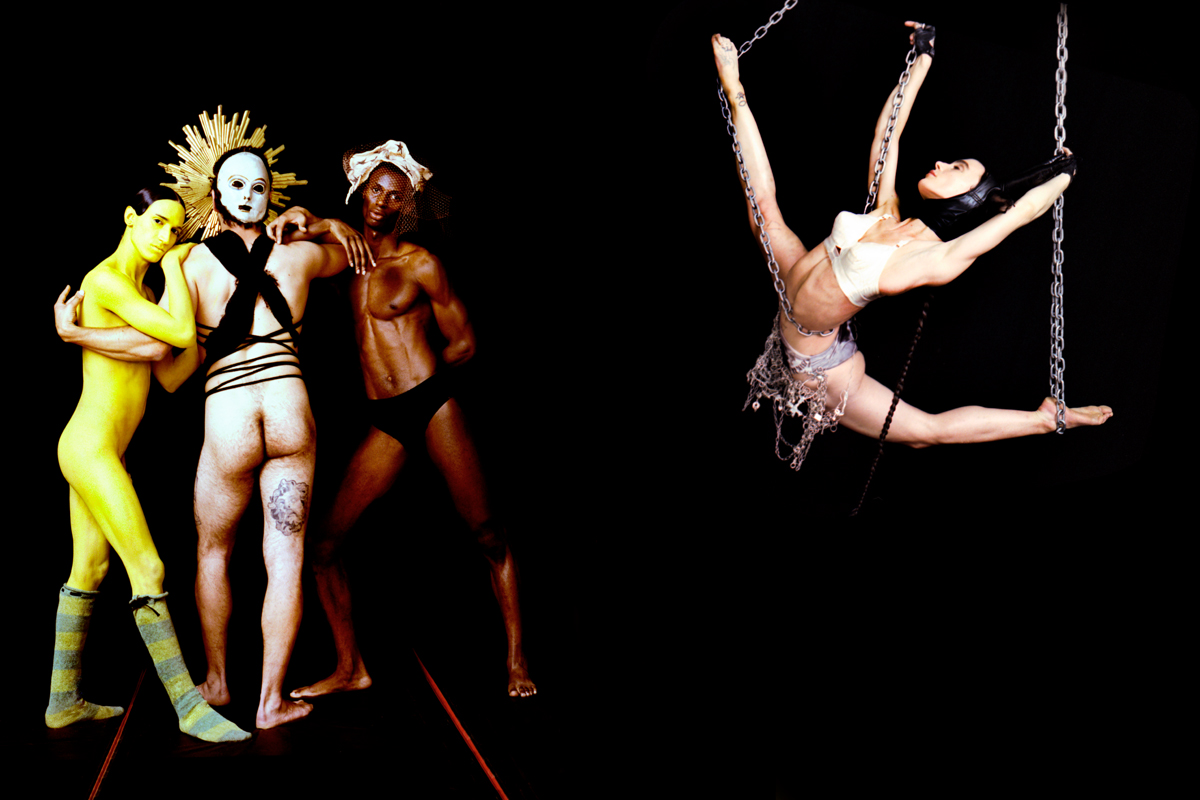

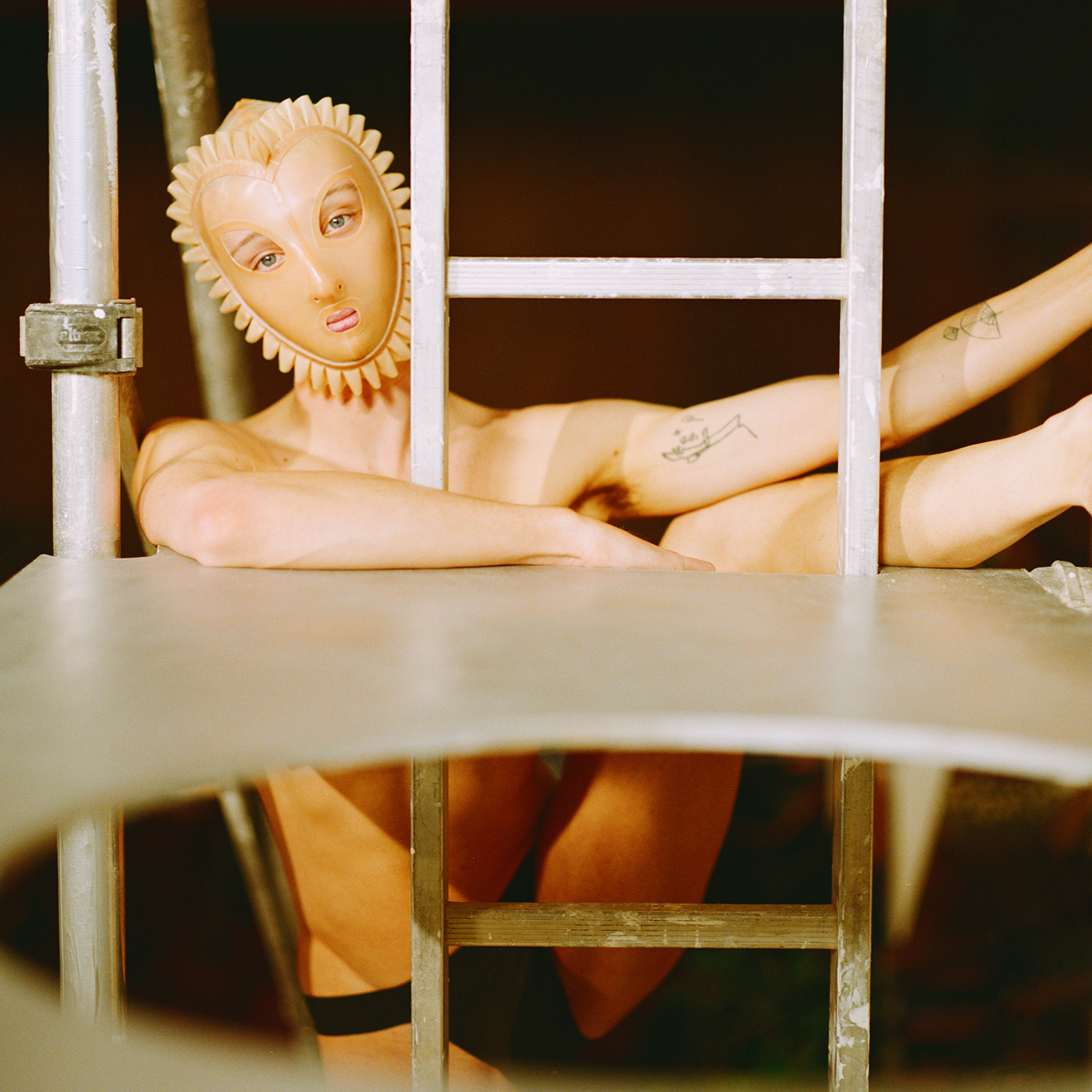
Credits
All images courtesy of Sensored.
